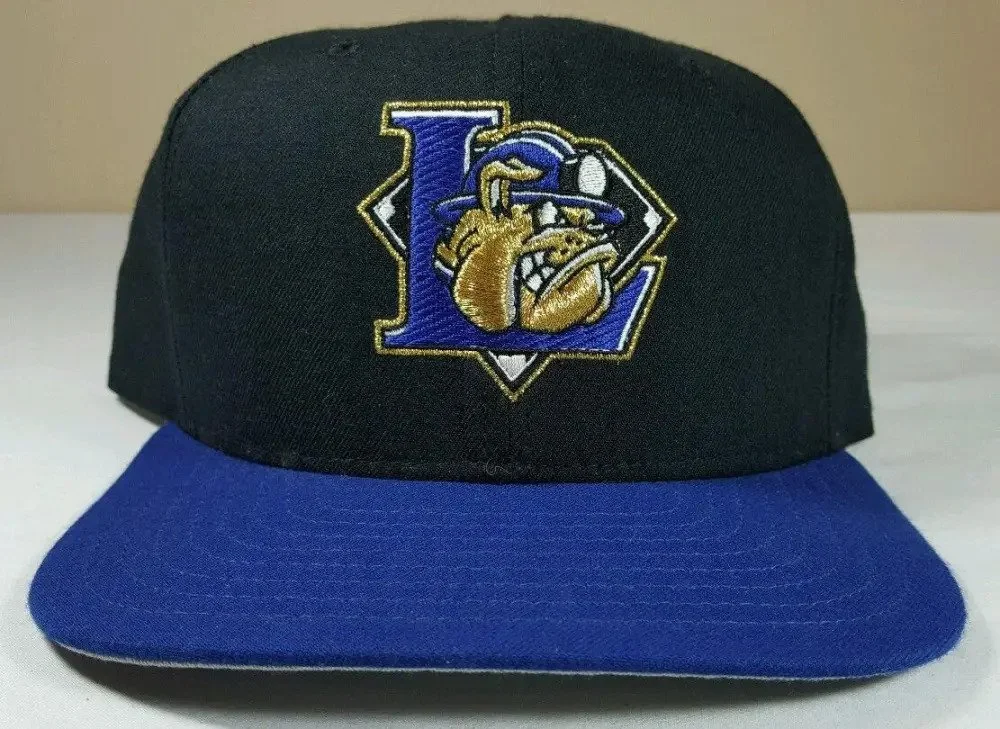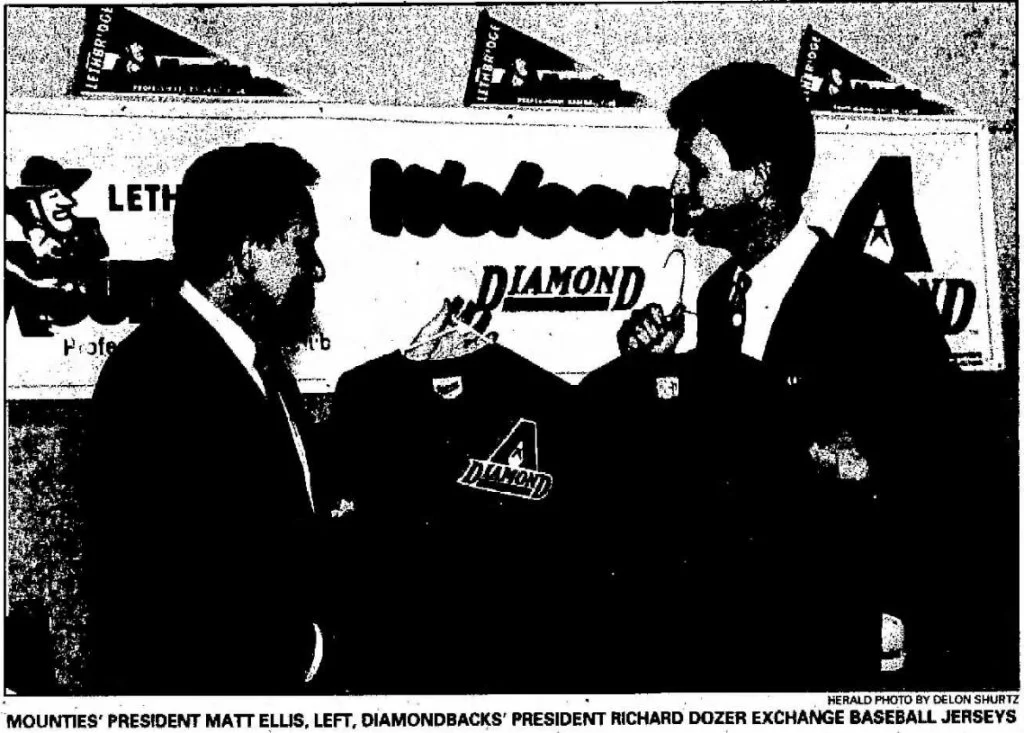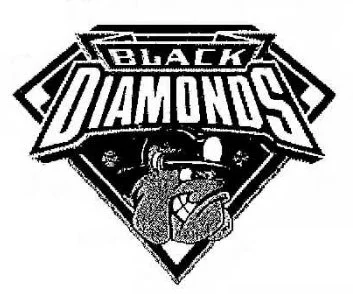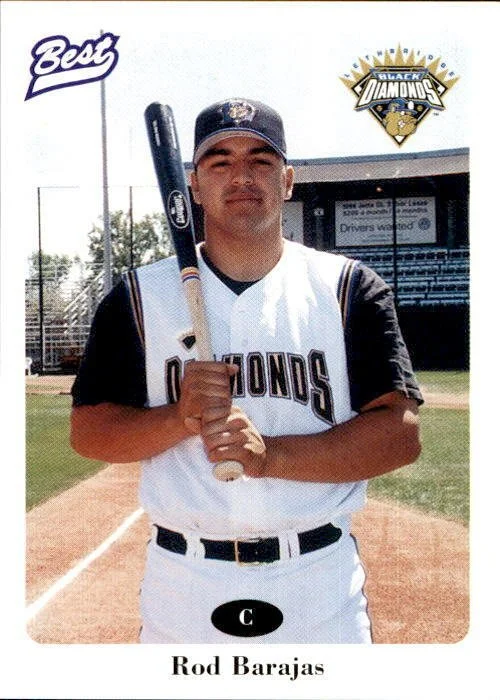McFarland: D-Backs’ first minor league affiliate was in Lethbridge
The Lethbridge Black Diamonds were an Arizona Diamondbacks’ Rookie-Ball affiliate in 1996 and 1997. Photo: Alberta Dugout Stories.
*This article was originally published on Alberta Dugout Stories on October 27. You can read it here.
November 1, 2023
By Joe McFarland
Alberta Dugout Stories
They were the first official affiliate established for the new Arizona Diamondbacks.
A full two years before the Major League Baseball (MLB) squad took to the field, the Lethbridge Black Diamonds were expected to be a powerhouse in their inaugural season of 1996, as any prospects drafted or signed would likely head to Alberta with no other farm teams set to operate until the following season.
With a former MLB infielder in Chris Speier as the manager, the Black Diamonds put together the best record in the Pioneer Baseball League (PBL) but were upset in the first round of the playoffs.
It would become the high-water mark for the team, and just three years later, they were packing their bags, once again leaving Lethbridge without a rookie league team.
With the D-backs facing the Texas Rangers in the 2023 World Series, we thought we would take a look back at the three-year marriage they had with Lethbridge and the connections they have to this day.
PIONEER LEAGUE REFLECTIONS
Baseball fans in Lethbridge had grown accustomed to the on-again, off-again relationship they had developed with the Pioneer League.
They were the first city to break into the game with the rookie affiliate of the Montreal Expos in 1975-1976, then continued on with the Los Angeles Dodgers from 1977-1983.
———————————————————————————————————————————————————————
Listen to Alberta Dugout Stories interview Gail Henley, former manager of the Lethbridge Dodgers here.
———————————————————————————————————————————————————————
Names like Andre Dawson, Ron Kittle, Sid Fernandez, Steve Sax and Candy Maldonado had come through town during the near-decade, bringing a total of three league championships (1977, 1979, 1980) and setting the wheels in motion for great MLB teams in the years that followed.
However, after disputes over selling beer during games, the Dodgers and the PBL left town after the 1983 season, leading to years of questions about whether and when that level of baseball would return.
Their wish was finally granted in 1992 with the introduction of the Lethbridge Mounties, a co-operated team run by Major League Baseball which relied on several MLB teams to fill the roster.
Over the next four years, the team would finish at the bottom of the North Division three times, failing to make the postseason.
Rumours had circulated about potential big league suitors, but nothing ever materialized.
COURTING THE ‘BACKS
That all changed in March of 1995 when the major leagues expanded to include Arizona and Tampa Bay.
As both teams started to firm up their front offices and put their official plans into place, word started to spread about where they would turn for their farm teams.
While the Mounties were in the midst of their summer campaign, officials with the Diamondbacks decided to make the trip up north.
“I think this is the final piece of the puzzle,” general manager Shawn Keba said in the July 13th edition of the Lethbridge Herald.
“We’ve been actively pursuing an affiliation, and last year we were very close with San Diego and it just didn’t happen. Now hopefully, we can secure something with Arizona for the future.”
Lethbridge was in a tight race with Ogden and Butte for the affiliation, but Keba believed facilities would put them over the top.
“We definitely have the best facility of the three,” he said. “Ogden has promised a new facility, but nothing has been made official. And everyone says Butte has the worst facility in the league. They play in a college stadium, and it’s more suited for football.”
Keba admitted that Henderson Stadium was only a small piece of the overall picture, as they were more interested in what the team could provide for the prospects.
His goal was to fill the Lethbridge ballpark with as many fans as possible to showcase what the atmosphere could be like, while showing the Arizona contingent – including general manager Joe Garagiola, Jr. – what southern Alberta had to offer.
“If we can pack the place that night, we can really show Arizona that we want them,” Keba said. “This is the opportunity we’ve been waiting for.”
SHINING LIGHT
Rolling out the red carpet for their visitors, Lethbridge impressed their visitors during their four-city tour.
Garagiola, Jr. was joined by Diamondbacks president Rich Dozer, determined to answer the question on where they would set up their first farm team – with the front-runners being Lethbridge and Ogden, Utah.
Ogden was promising a new $6-million stadium with a capacity of 3,000 and a location closer to Arizona, while Lethbridge boasted a solid facility that had already been in use.
Another thing going for the Alberta operation was that MLB was hoping to get out of operating minor league teams as a cost-saving measure.
“I was told that when I came to Lethbridge, I wouldn’t understand why you don’t have an affiliation,” Garagiola, Jr. told reporters during the July 20th visit.
“Now that I’ve been here, I don’t have a good answer for that question.”
Both visitors were impressed with the professional atmosphere provided by the Mounties.
“Your facilities are second-to-none and ever since we crossed the border this afternoon, I can’t believe how nice the people have been,” Dozer added.
“It’s the kind of atmosphere we want for our players. For a lot of them, they’re coming out of high school and this would be their first experience away from home.”
While they didn’t have a firm deadline in mind, the Diamondbacks’ brass was hoping to make an official decision within a month.
BRIDGE CITY BOUND
True to their word, less than a month later, a news conference was scheduled for August 17th.
At the podium, Dozer exchanged baseball jerseys with Mounties’ president Matt Ellis to officially announce a two-year affiliation agreement.
“When Joe (Garagiola, Jr.) and I left Lethbridge, we both felt comfortable about the city,” Dozer said. “But we both went separate directions … he went one way and I went to visit Glacier, so we didn’t have a chance to talk after.”
“When we finally talked, we both agreed Lethbridge was the leader, from everything from the city to the facility.”
The affiliation was also viewed as something that would provide more credibility to local fans about the quality of players coming through, especially in the first couple of years as the top Arizona draft picks would have to come to Lethbridge for their first taste of professional baseball.
“We’re going to be one of the top teams in the Pioneer Baseball League,” proclaimed Keba.
“Suppose Arizona drafts a guy next year who is 22, played four years of college, and they want to send him to double-A or something. Well, he’ll come here, because they don’t have a double-A team yet.”
While fans were hoping for something more long-term, a two-year deal was the maximum allowed as the player-development contract with MLB expired at that time.
INTEGRITY AND FIRE
Despite finishing the 1995 season in the North Division basement, the Lethbridge Mounties left the Pioneer League in good standing.
They set a franchise record for attendance after 47,607 fans went through the turnstiles, setting the expectations to be higher with a new affiliated team in town.
The pieces started coming together quickly, as the new “Black Diamonds” moniker, logo, and new team colours – black, royal blue, metallic gold, and white – was unveiled in November at a ceremony at the Sir Alexander Galt Museum.
The name had first been suggested by Mayor David Carpenter during a casual conversation with Dozer and Ellis in July.
In December, long-time MLB infielder Chris Speier was named the new team’s first manager.
“Chris brings 19 years of major league playing experience to the Diamondbacks,” said Garagiola, Jr.
“It’s important that our young players have the opportunity to be around quality people like Chris.”
The dugout boss was excited about getting in on the ground floor of a new organization.
“As manager of the Black Diamonds, my job will be to instill a sense of professionalism and a winning attitude, and make sure the players progress fundamentally so they will feel a sense of accomplishment that they’ve learned how to play the game of baseball and increased the talent they have,” Speier said.
“I want them to play the game with integrity and fire, which I tried to do when I played.”
As the front office took shape, the team did face a bumpy situation in early 1996 when it was announced that Keba had been relieved of his duties.
“You don’t want to make a change but it wasn’t working out,” vice president Matt Ellis told the Lethbridge Herald on January 23rd.
“The decision came from our managing committee which is basically made up of my dad (Mike), myself and the ownership.”
Ellis wouldn’t go into specifics on why the change, only saying the situation wasn’t working and that it was an amicable split.
“The affiliation had nothing to do with it,” he continued. “It just wasn’t working so let’s keep it at that. We’re still on track, we won’t miss a step with this and we’re working hard for the approaching season.”
The team finalized its coaching staff by adding former big league veterans Jim Presley and Dennis Llewallyn, and started assembling its roster through free agent and international signings as well as the June MLB Draft.
POLISHING UP FOR OPENING DAY
It was one thing to talk about having a good team with the best prospects coming to Lethbridge for the Black Diamonds’ inaugural season, but it was another to see it all happen.
Just two days before their Pioneer League season-opener, the players gathered at Henderson Stadium for the first time, with local fans noting how this batch of prospects was hitting and throwing the ball harder and already playing a crisper game than they had grown accustomed to.
“We’re fired up, fired up, I think that’s the only way to describe it,” Speier said. “We’re just anxious to get things going.”
On June 19th, the Black Diamonds made the trek along Highway 3 to face their Alberta rivals, the Medicine Hat Blue Jays, at Athletic Park.
Garagiola and Dozer also made the journey to see their prime prospects – potential 1998 Arizona Diamondbacks – in action.
“There are no butterflies tonight, this is just fun,” Dozer beamed.
Lethbridge Black Diamonds logo.
“This is probably one of the three or four most exciting days we’ve had – there was the day we were awarded the franchise, when we drafted players and now we’re playing and this ranks right up there.”
Unfortunately for the Lethbridge squad, the game didn’t end the way they had hoped as the Baby Jays scored four runs in the seventh inning to get them past their rivals 6-5.
They wouldn’t have to wait to taste victory though, as the Black Diamonds prevailed with a 7-6 decision the following night.
SHINING DIAMONDS
Winning became a theme for the Black Diamonds for the rest of the 1996 season, as they went on to post the best record in the league with 50 wins and just 22 losses.
They were paced offensively by league MVP Kevin Sweeney, who hit an incredible .424 with 14 home runs and 72 runs batted in during his 63 games.
The roster also featured four players who would go on to MLB success, including catcher Rod Barajas (.337, 10 HR, 50 RBIs), Jason Conti (.367, 4 HR, 49 RBIs, 30 stolen bases), Rob Ryan (.303, 4 HR, 37 RBIs, 23 stolen bases) and Junior Spivey (.336, 2 HR, 25 RBIs, 8 stolen bases).
On the mound they were led by future MLBer Vladimir Nunez, who went 10-0 with a 2.22 earned-run average in 14 appearances. He also led the team in strikeouts with 93 and innings pitched with 85 on his way to being named the minor league player of the year for short season classifications by Baseball America.
Larry Rodriguez (7-1, 3.83 ERA in 10 starts) and George Oleksik (6-1, 6.58 ERA in 14 starts) were also instrumental in the team allowing the least number of hits, runs, home runs and walks during the season.
The positive momentum rolled into the playoffs, as the Black Diamonds opened up their best-of-three series by dismantling the Helena Brewers 13-0 with Nunez allowing just three hits and striking out seven in seven innings of work.
However, game two was a different story as the Brewers blew a late 3-0 lead, only to rally in the bottom of the ninth to pull out a dramatic 4-3 victory.
What began as a dream season turned into a nightmare when the Brewers pounced on the Black Diamonds early and often in a 9-0 drubbing in a deciding third game.
It was an uncharacteristic way to end the season, given how offensively talented the team was throughout the entire summer, but team brass were impressed with the overall product in its first season.
Not only did they break league records for runs, home runs and total bases while boasting the league’s batting champ, home run leaders, and top pitcher, but they also broke their attendance record with 49,134 fans coming to games.
“We broke our attendance record again so we can’t complain,” Ellis said.
“There were nights where we would have liked to have more people in the stands but the bottom line is we keep going up. We haven’t reached the goals we’ve set yet so there is room to improve but it’s hard to put a negative when you break a record.”
In December of 1996, the Diamondbacks extended their affiliation deal with Lethbridge to take them through the 1998 season.'
SNAKES BITTEN
As is always the case with rookie league baseball, turnover is very high, so the team’s expectations heading into the 1997 season were more muted than the previous year.
With new manager Tommy Jones at the helm, the Black Diamonds were able to muster a record of 39 wins and 33 losses, just one game back of the first-place Great Falls Dodgers.
They once again won the second-half North Division crown, but were ousted in the first round of the playoffs for a second-straight season.
The Black Diamonds returned in 1998 with Joe Almaraz as manager and they were able to post a 43-32 mark and another second-place finish behind Medicine Hat.
It took a win in the final game of the regular season for Lethbridge to clinch the North’s second-half title, sending them to a first-round matchup with Great Falls.
They took care of business in game one with a convincing 15-7 win, then lost a heartbreaking 4-3 decision in game two, before getting the piano off their playoff back with an 11-6 victory in the third-and-deciding game.
The win gave the Black Diamonds their first trip to the Pioneer League championship series, where they faced the Idaho Falls Braves.
“Competitive – that’s the one thing I remember, they are very competitive,” rightfielder Daniel Singletary told the Herald on Sept. 8th.
“They play the same way we play, they never give up, so it will be intense.”
In what could only be described as deja vu all over again, the Black Diamonds trounced the Braves 8-2 to open the championship series before falling 5-4 in a game two 12-inning marathon.
Recent history wouldn’t repeat itself though, as Alex Pelaez blasted a three-run home run during a six-run fifth inning, and the Braves cruised to a 7-3 game three victory and the PBL championship.
“We swung at some bad pitches, and we didn’t make the adjustments,” said catcher and future MLBer Robby Hammock.
“When he (Braves pitcher Ben Howard) is bringing it 92, 93 miles an hour, it’s hard to know what to do.”
It was a heartbreaking way to end the season, but the hardest part was still to come.
SLITHERING AWAY
Some of the challenging aspects of the 1997-1998 seasons in Lethbridge included the weakness of the Canadian dollar against the American currency, as well as declining attendance figures.
The club had fallen to 46,909 fans in 1997 and just over 40,000 in the 1998 season, despite their continued on-field success.
Rumours had started circulating during the summer about Ellis entertaining offers from other communities, but he claimed nothing was written in ink.
“I don’t have another park to play in, I haven’t gotten any approval to move the franchise and I haven’t applied for it either,” he said in an Aug. 29th interview with the Herald.
“I can tell you that we have been in contact with the people in Missoula and we are assessing the situation.”
So when the Black Diamonds called a news conference for Nov. 16th, many baseball insiders knew what was coming next.
Ellis announced the team was heading to Missoula, despite several major concerns in heading there.
“We’re not even guaranteed we’ll get a facility in Missoula,” he said.
“In two years, we might not have one so we’re taking a big chance moving but we wouldn’t be going at all if we didn’t believe they are who they say they are.”
Ellis was alluding to a planned $5 million park that already had thousands of dollars raised, as well as a large population to draw from and American dollars to spend.
“The city of Lethbridge was good to us, the community was great in a lot of ways and if we had drawn more fans, we’d be here for a lifetime,” he continued.
“It’s not a pro baseball area the way we operate. We tried a lot of things here, we brought in a lot of new things in terms of marketing and even with all that stuff, it wasn’t working.”
While it appeared to be a hasty move, Herald writer Trevor Kenney said it was clear that movement was afoot.
“The sore point with the Ellis departure is the claim that this deal with Missoula just fell into their lap over the last two weeks when such a claim appears to be blatantly false,” he wrote on Nov. 25th.
“We had the story in July and, at that point, sources told us that president Mike Ellis had already visited Missoula at least one year previous to scout the city.”
“More likely, the Diamonds started to pull the plug on Lethbridge long before the first pitch was even thrown to start the 1998 season.”
The Missoula Osprey made their Pioneer League debut in 1999, winning the league championship that season. They would repeat as champions in 2006, 2012 and 2015 before falling victim to Major League Baseball’s minor league realignments after the 2019 season.
The Pioneer League wouldn’t return to Lethbridge and left Alberta for good with the departure of the Medicine Hat Blue Jays in 2002.
However, out of the ashes of the Black Diamonds rose the Lethbridge Bulls, who began play in the Saskatchewan Major Baseball League in 1999, which later became the Western Major Baseball League and then the Western Canadian Baseball League.
As the MLB’s Arizona Diamondbacks look to capture their second World Series championship in franchise history, we can look back at how we were a part of the organization’s beginning, while simultaneously ask “what if they would have stuck around?”




